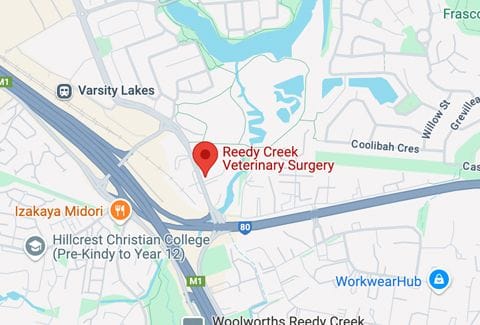Understanding Your Pet's Discomfort: Recognising Signs of Pain
)
As pet owners, we always want our furry friends to be happy and healthy. However, it can be challenging to determine if our pets are experiencing any discomfort or pain since they can't communicate with us directly. That's why it can be helpful for pet owners to educate themselves about the signs of pain in animals. By recognising these signs, we can provide our pets with the care they need and deserve. In this blog post, we will discuss the various indicators that your pet may be experiencing pain and discomfort, allowing you to better understand and address their needs.
1. Behavioural Changes:
One of the most apparent signs that your pet is in pain is a change in their behaviour. They may become more withdrawn, anxious, or aggressive. You may notice that your typically friendly and sociable pet is avoiding contact with you or other animals. They may also exhibit signs of restlessness or pacing, as well as an increased need for attention. Pay close attention to these changes, as they often indicate discomfort or pain.
2. Altered Eating and Drinking Habits:
Changes in your pet's eating and drinking habits can be a red flag for pain. If your pet suddenly loses their appetite or only eats small amounts of food, it could be an indication that they are not feeling well. Similarly, increased thirst may suggest an underlying health issue. Keep an eye on the frequency and amount of food and water your pet consumes, as any significant changes should be discussed with your veterinarian.
3. Vocalisation:
Just like humans, animals instinctively vocalise when they're in pain. Pay attention to any excessive whining, whimpering, or groaning that your pet may exhibit, as it could be a sign of discomfort. Cats may also meow more than usual or exhibit excessive grooming behaviour when they are in pain. While some vocalisation is normal, particularly in response to stimuli like play or hunger, persistent and unusual vocalisation should prompt further investigation.
4. Changes in Grooming Habits:
Pets are known for their self-grooming habits. However, if you notice a sudden decrease in your pet's grooming routine, it may indicate an underlying issue. Pets in pain often lose interest in grooming themselves, leading to a dull or unkempt appearance. Additionally, they may over-groom or excessively lick certain areas to try to alleviate their discomfort. Be vigilant of any changes in your pet's grooming habits and consult your veterinarian if you notice anything out of the ordinary.
5. Posture and Movement:
Animals in pain may exhibit changes in their posture and movement. For example, they may have difficulty getting up, jumping, or climbing stairs. You may notice a reluctance to engage in physical activities they previously enjoyed. Additionally, they may hold their body in a hunched or tense position, protecting the affected area. Watch for any signs of limping, stiffness, or reluctance to move, as these could be indicators of pain.
6. Changes in Sleeping Patterns:
Sleeping patterns can also provide clues about your pet's well-being. While pets do sleep more than humans, excessive sleep or restlessness during sleep can be a sign of discomfort. Changes in sleep patterns, such as difficulty settling down, sudden awakenings, or inability to find a comfortable position, should be taken seriously. Monitor your pet's sleep habits and consult with your veterinarian if you notice any significant changes.
7. Changes in Facial Expression:
Pet owners should pay close attention to their pet's facial expressions as they can speak volumes about their level of comfort. A pet in pain may appear tense, with a furrowed brow, squinting eyes, or a clenched jaw. They may also display rapid or shallow breathing. Additionally, dogs may lick their lips frequently or exhibit a furrowed forehead, while cats may have dilated pupils or a flattened appearance to their ears. Understanding your pet's normal facial expressions and monitoring for any changes can help you identify signs of pain.
Recognising signs of pain in pets is a crucial aspect of responsible pet ownership. While the indicators mentioned above can be indicative of discomfort, it's important to keep in mind that pets may not always overtly express pain. Regular veterinary check-ups, open communication with your veterinarian, and a keen awareness of your pet's usual behaviours are key to identifying and addressing pain promptly.
| Tags:Client InformationHealth AdviceProactive Pet Care |
)

